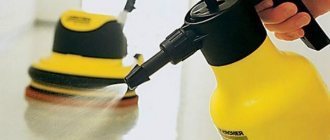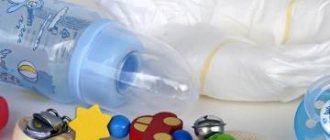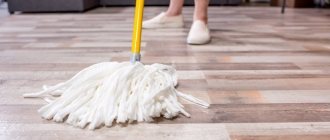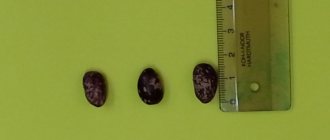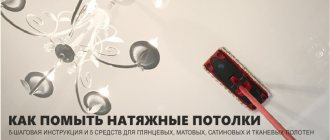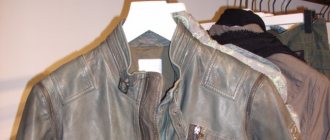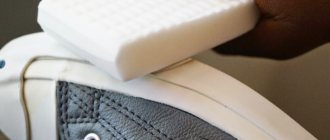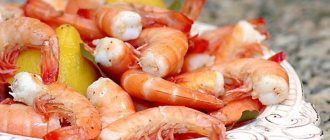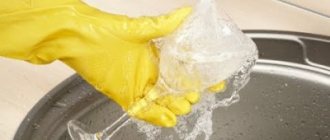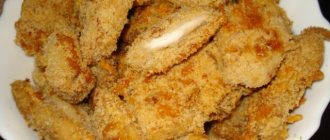The healthiest food for a newborn or infant is not expensive artificial formula, but mother’s milk, which contains all the components necessary for the growth and development of the baby. But sometimes women have problems with lactation, the baby does not latch on to the breast, and he has to be fed from a baby bottle. It is not difficult to learn how to wash such dishes; it is important to choose a natural product that does not contain chemicals for disinfection.
The need for sterilization
The immune system of newborns and infants is not always able to cope with bacteria that live in the external environment. Microbes that enter the baby's digestive tract during bottle feeding cause stomach upset, the baby loses appetite and can become seriously ill. Bacteria settle and multiply in water from taps and wells; the source of infection is the milk formula that is fed to the baby.
Sterilization of children's dishes makes it possible to protect the child's fragile body from diseases of the digestive tract caused by microbes. It is necessary to disinfect diapers and dishes only in the first weeks after the birth of a newborn.
Author block
The arrival of a baby in the house is always a big celebration and, of course, a big commotion. Now parents have to change their habits and hone new skills in caring for a newborn.
Today, exclusive breastfeeding is rarely used. Some people supplement with infant formula, while others have to get out of the situation only with their help.
A small child does not yet know how to eat from a spoon; the only developed reflex is sucking, so he has to be fed with a bottle.
Now they are presented in a large assortment, mainly made of polymer materials, but there are also more familiar ones - made of glass. Regardless of the chosen model and brand of the bottle, it will need to be properly processed, and here we don’t just mean simple washing with running water.
Sterilization methods
Regardless of the chosen disinfection method, bottles must first be washed using soda or salt, special liquids produced for the care of baby dishes. The walls must be thoroughly cleaned of plaque and milk mixture.
Boiling
To disinfect glass bottles, use a small saucepan, fill it to the top with water and place it on the stove. Place the unwrapped container in it and boil under the lid for about 10 minutes. Do not expose plastic models to heat. The material melts and releases toxins. Before sterilizing bottles, it is recommended to first boil hard water, otherwise the dishes will become coated.
Steam treatment
In the absence of special household appliances, you can destroy germs on children's dishes by using kitchen utensils. Water is poured into a saucepan or stewpan, a colander is placed on top, and jars and bottles are placed on top of it upside down. After the liquid boils, steam is released; you need to hold the pan over it for at least 10 minutes.
Special sterilizer
Disinfecting a child's accessories by boiling takes a lot of time; when disinfecting bottles with steam, it is easy to get burned, and many parents buy sterilizers. The device is manufactured in the form of a reservoir that can accommodate dishes with different neck diameters.
The electric model consists of a housing, a heating element, a container for liquid, operates from a 220V network:
- A glass of water is poured into a special compartment.
- Bottles and nipples are provided.
- Lower the lid.
- Press the power button.
See also
What is the best way to paint a pine staircase in a house, rules and step-by-step instructions
Microwave sterilizers are placed in a microwave, where jars and other utensils are disinfected with steam for 10 minutes. Ultraviolet devices that are powered by mains or batteries do not use water; the bottles are disinfected with rays from lamps located inside the body. Some models of sterilizers not only kill germs, but also warm up the baby's formula.
Multicooker or steamer
Modern household appliances such as multicookers come to the aid of young mothers, in which they prepare dietary dishes from meat, fish, side dishes from cereals and steamed vegetables. Baby dishes, along with pacifiers and nipples, are placed on a wire rack or strainer, the lower bowl is filled with water, the steam mode is selected and the time is set.
Devices absorb the smell of food; before sterilizing children's products, all parts must be washed thoroughly.
Microwave
To heat a portion of the mixture, it is not necessary to light a fire or place a pan on the stove. For this purpose, people are increasingly using modern technology - the microwave. It also disinfects dishes that are filled with formula for the baby. Place the bottles in a glass bowl, which is placed in the oven, for 3 minutes. Nipples and elastic bands are sterilized separately.
Special means
Modern parents often travel with children. To feed your baby on the road, the dishes must be disinfected. Pharmacies sell special antiseptics that destroy germs.
In cold water
It is not always possible to have boiling water at hand; tablets containing sodium dichloroisocyanurate are not dangerous for children and dissolve in cold water. To disinfect bottles:
- The composition is poured into a deep bowl.
- Lower the dishes and nipples so that they are completely in the liquid.
- Leave for half an hour.
It is not recommended to use tablets every day. It is better to disinfect bottles with steam before feeding, which destroys all harmful bacteria.
About the dishwasher
Should you use a dishwasher? This is permitted if there is a mark on the bottle indicating that it can be cleaned using such a device. This information can also be obtained from the seller.
The vessel should be placed upside down on the top shelf. It is important that it is located far from the heating element. In stores you can find a special basket designed for washing pacifiers and rings. However, it is still recommended to clean nipples by hand rather than using a dishwasher.
How and what to wash
The dishes to be sterilized must be clean and dried, without any vegetable puree or mixture dried on the walls. Jars, cups and bottles are washed with liquid formulations made from vegetable oils and herbal extracts.
Conventional means
To clean glass children's dishes, sometimes boiling water and a brush, which is scalded with hot water, is enough. Plastic items cannot be heat treated, but can be gently washed with soda, being careful not to scratch the dishes.
Regular salt copes with fat, cleans bottles of vegetable puree, mustard powder removes the remnants of porridge, butter, and milk formula. Any contamination is removed with laundry soap. Citric acid removes plaque and lightens dark stains from fruit juices.
With vegetable oil
Not all parents trust soda or table salt and buy special detergents in household chemicals departments that do not contain:
- aggressive dyes;
- synthetic fragrances;
- phosphates;
- oil compounds.
See also
How to hang kitchen cabinets on the wall, mounting methods and step-by-step instructions
Liquids based on olive or other vegetable oil are safe for babies. Such gels remove fat, are easy to rinse, have a delicate scent, and soften the skin.
With citrus essential oil
The quality of organic products that are produced specifically for washing children's dishes is confirmed by the presence of environmental certificates. Some gels add essential oils of tangerine, rose, lime, lemon, which do not irritate the skin of the hands, but have an antibacterial effect.
Based on sucrose ester
Hypoallergenic liquid products are produced for washing bottles from which formula milk is fed to newborns and infants. They contain a vegetable emulsifier obtained from cane sugar and palm oil. Gels with ether have antimicrobial properties.
With healing chamomile extract
Some plants contain tannins, flavonoids, organic acids, and essential oils, which give them healing powers.
Pharmaceutical chamomile functions as an antiseptic, has bactericidal properties, and is added to cosmetics and liquids used to wash children’s dishes.
Professional compositions
Many parents, caring about the health of their children, buy balms and gels that are produced by well-known foreign and domestic companies and corporations specifically for washing feeding bottles.
Aqa Baby
The product produced under this brand removes food debris and cleans pacifiers, dishes, and toys from germs. The gel contains active components that are harmless even for a newborn. The solution is easily rinsed with water and does not remain on the walls of glass or plastic bottles.
Pigeon
It is economically used and kills germs, a product developed by a company from Japan. The main substances contained in the gel are of plant origin; it can be used for washing nipples, fruits, and dishes. Pigeon is sold in a 700 ml plastic bottle.
Nuk
The German brand produces high-quality and safe products for the care of children's clothes and dishes. Nuk brand products have gained popularity among parents from different countries because:
- Contains only natural ingredients.
- Doesn't dry out, but softens the skin.
- Completely rinsed.
The liquid composition is used for washing bottles, nipples, and silicone products. It contains no dyes that cause allergies in children.
Bio Mio
The product, which is produced by a company from Denmark, is suitable not only for washing dishes, but also for food products. The gel has a pleasant smell, softens the skin, does not contain preservatives, removes fat, and is produced on the basis of tangerine oil.
"Umka"
Mothers who try to protect their baby’s body from exposure to microbes wash bottles with a domestically produced balm with herbal extracts. “Umka” cleans dishes from any remaining mixture, regardless of the temperature of the liquid, does not create a large amount of foam, and does not form residues after rinsing.
Gel "Nevskaya Cosmetics" for children
The thick consistency product, sold in 500 ml plastic packaging, effectively washes away grease and food, and kills germs on dishes.
The gel contains citric acid, which brightens darkened glass, the composition is safe for babies, and can be rinsed with running water.
"Eared Nanny"
The liquid product, developed by a domestic company, has antibacterial properties, contains herbal extracts, disinfects cups and bottles, washes away almost all contaminants, removes food odors, and does not cause allergies even in infants.
See also
Rules and best ways to quickly fold jeans at home
Grandmother's funds
Some mothers, not trusting modern products, still use the old, tried and true recipes used by our babies for toddler baths.
Some of the most popular are:
- Washing soap;
- lemon juice or citric acid;
- mustard;
- baking soda.
. Old-fashioned “The washing method has its disadvantages and advantages. The undoubted advantages include:
- These are natural products that do not contain chemical components;
- They do not cause allergic reactions;
- They wash dishes well.
The disadvantages include the following:
- Internal ways only wash dishes, but does not treat them, i.e. they do not destroy bacteria;
- They don't wash out well with water and may stay on the sides of the bottle;
- Almost all of these products are very drying on your hands.
Laundry soap is especially popular due to its antibacterial properties. According to GOST, it consists of:
- animal fat;
- vegetable oils;
- sodium hydroxide - principle.
But some of these substances do not dissolve in water, so when you use soap to wash dishes for children, you must be especially careful to rinse them.
Cleaning brushes
Plaque settles on the walls of the bottles, food debris accumulates, in which microbes begin to multiply. Not all detergents dissolve deposits; they can be removed with a special sponge or other device.
With foam tip
There are several types of brushes; they do not scratch glass or plastic, but a product with a foam tip that extends when you press a button copes with dirt and deposits.
Companies Dr. Brown
The brush, produced by a well-known company, consists of a sponge and bristles, easily penetrates inside a bottle with a narrow neck, cleans the remaining mixture, removes plaque, and attaches to the surface with a suction cup.
With sponge
It is convenient to wash pacifiers and baby dishes made of glass and propylene using a brush with a sponge made of natural porous material. When the brush rotates, the bottom of the bottle is well cleaned and milk residues are removed from the protrusions.
2 in 1
A double-sided brush equipped with a sponge is designed for daily care of baby dishes, pacifiers, and pacifiers. It not only removes food debris, but also kills germs with the help of bristles.
Chicco
The brush of this model performs several functions. Tweezers are built into the handle of the item, which makes it easy to remove bottles after sterilization.
What items should be sterilized?
Having figured out why sterilization is needed, it is now worth understanding what should be subjected to this procedure. Such items include:
- water bottles, feeding bottles and pacifiers;
- pacifiers, it is better to have at least two of them;
- breast pump and related parts;
- teething toys or other items that can get into the baby's mouth and will not be damaged during the heat treatment process.
After sterilization, everything should be dried and prepared for further use.
How to remove yellowness
Over time, a reddish coating appears on plastic dishes. It is effectively cleansed by a gel produced under the Nuk brand. In the absence of this remedy:
- You need to pour the cereal into the bottle, fill it with water, close it and shake thoroughly.
- Pour a soda solution into the dishes and wipe with a brush.
- Yellowness is removed with boiling water and a washcloth.
If bottles are disinfected in a sterilizer, plaque will not form. To remove unpleasant odors, use a toothbrush.
During the journey
How to wash baby bottles when traveling? When going on a trip, you need to stock up on sealed bags. A brush, a brush and detergent are placed there. To clean dishes, it is advisable to use water that is suitable for drinking. If this is not possible, you can limit yourself to running water. You should definitely take care to thoroughly clean the sink before washing.
Additional sterilization may be required when traveling. This is due to the fact that the quality of running water cannot be checked. The most convenient way to sterilize bottles on the go is with special aseptic tablets. You need to take water into a bowl, dissolve the product, and then immerse the dishes in it for half an hour. Tablets can be used even in combination with cold water. In any case, the procedure will provide the desired result.
Preventative bottle care
To ensure that there are no problems with the bottle and, even more so, that it does not threaten the baby, you should:
- Wash the container immediately after feeding, using special brushes;
- resort to sterilization daily in the first three months to protect the child;
- To prevent the walls of the bottle from becoming covered with a film, it is necessary to wash it first with cold and then with warm water;
- Fine salt or soda will help to rinse the pacifier, followed by dipping in boiling water;
- If you want to wash the bottle in the dishwasher, it is better to choose containers with simple shapes.
Remember, issues of cleanliness of a baby bottle are not only about aesthetics, but also about the safety of the baby. Do not neglect simple rules and then your baby will grow up healthy and delight you with his successes.
Source
Note to mommies
Sometimes you have to go with your baby to visit your parents or go on a longer trip. This situation is a real force majeure, in which it is difficult to comply with the usual rules for washing bottles.
- When you go on a trip, take with you a washing brush, a special product, and a pacifier brush. Pack everything in different tight bags
- Try to wash bottles only in drinking water; if there is any doubt about the quality of the water, it is better to additionally sterilize them
- When traveling, disinfection using conventional methods is difficult, so you can resort to using special tablets or liquids for rapid sterilization
- If you don’t have this at hand, you can simply pour boiling water over a clean bottle.
In the age of advanced technology, they also think about young mothers who are offered to use sterile special inserts in the bottle. They are removed after feeding, and the container itself will remain clean.
